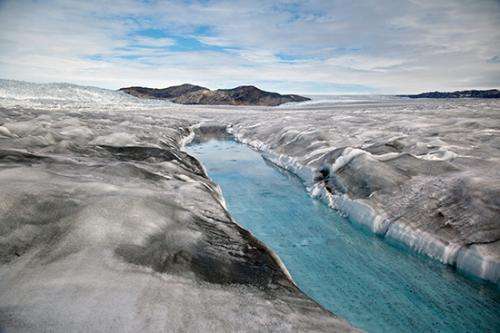Measuring the impact of light-absorbing particles on Earth's snowpack, glaciers, and ice cover

When dust, soot and other black or dark-colored particles emitted through pollution are deposited in snow and ice, they increase melting. Pacific Northwest National Laboratory led a comprehensive, state-of-the-science review of light-absorbing particles. Their findings offer a better understanding of these complex climate-changers, underscoring the particles' far-reaching influence, affecting freshwater supplies and sea-level rise, as well as atmospheric heat and cloud formation. The team summarized the range of methods used to measure these particles in snow and ice, especially in regions that are most sensitive to changes in the Earth's ability to reflect sunlight. The review also covered modeling progress and suggested ways to advance understanding the particles' impact on the global climate.
True to their name, light-absorbing particles attract sunlight and become a major factor in increasing snow and ice melt. They also influence Earth's temperature, the ability of the surface to reflect sunlight, the amount of freshwater, and the rise of sea levels. Thus, these particles were identified as formidable climate-changing agents in the fourth and fifth assessment reports of the Intergovernmental Panel on Climate Change. To understand how changes in biomass- and fuel-burning —a large source of these particles —might help mitigate glacier melting, scientists must disentangle the influences of the particles' natural and human-caused sources. The goal is to quantify the effects and simulate possible future changes to better understand changing climate.
The team, led by Dr. Yun Qian at PNNL, reviewed hundreds of research articles to summarize technical methods of measuring light-absorbing particles in snow and ice. They assessed the progress in measuring them in the Arctic, Tibetan Plateau, and other mid-latitude regions. The team also analyzed the status of modeling the particles' mass concentrations, albedo reduction, radiative forcing, and climatic and hydrological impact at global and regional scales. Finally, they identified research needs for reducing uncertainties in the impact of light-absorbing particles in snow and ice on global and regional climate and the hydrological cycle.
More systematic field measurements and coordinated modeling efforts will help advance the understanding of light-absorbing particles' effects in snow and ice and measure their impact on the global climate. The researchers suggest steps toward those outcomes:
- Increase measurements. This is the most important and urgent task for the near future.
- Incorporate LAP-in-snow processes into global models
- Collect more frequent snow impurity measurements from the mid-latitudes to polar regions
- Increase comparisons during "the same time periods" from diurnal to seasonal time scales
- Consider the role of snow algae on glaciers and ice sheets in future studies.
More information: Qian Y, TJ Yasunari, SJ Doherty, MG Flanner, WM Lau, J Ming, H Wang, M Wang, SG Warren, and R Zhang. 2014. "Light-absorbing Particles in Snow and Ice: Measurement and Modeling of Climatic and Hydrological Impact." Advances in Atmospheric Sciences 32(1): 64-91. http://springer.libdl.ir/article/10.1007/s00376-014-0010-0
Provided by Pacific Northwest National Laboratory



















